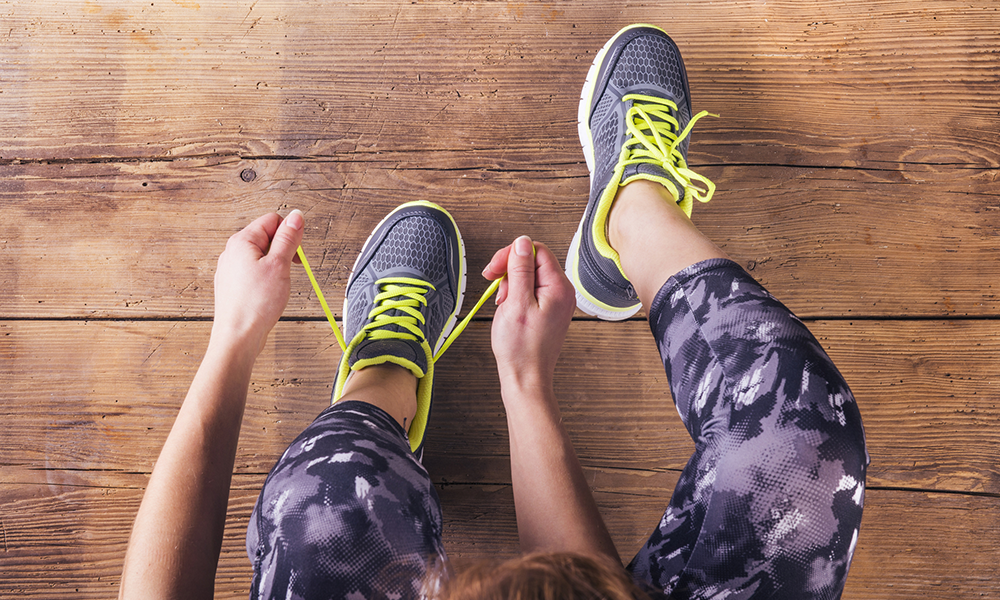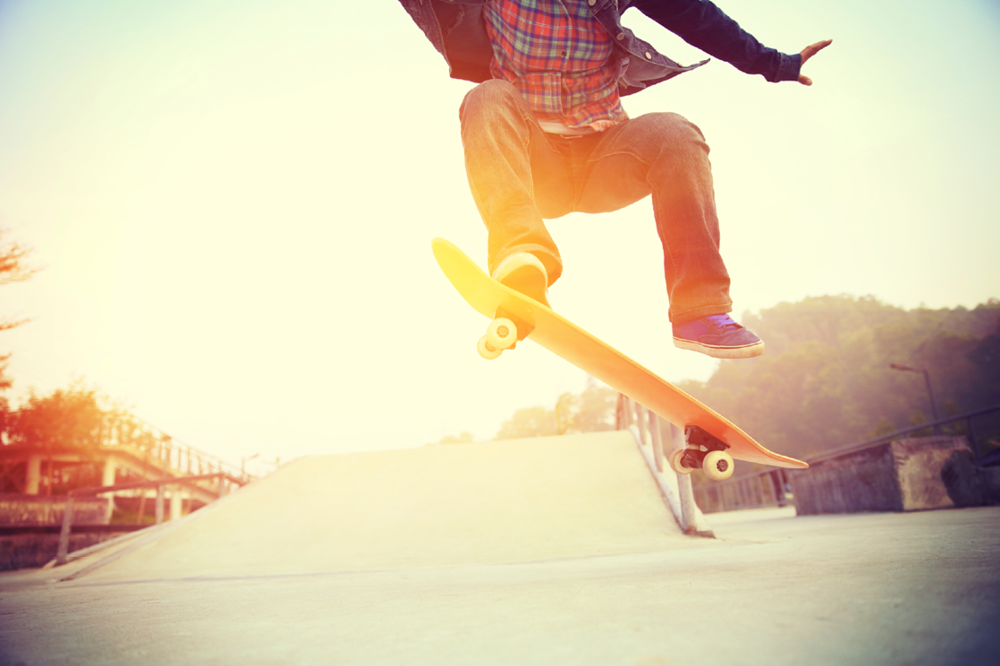Make no bones about it: Skateboarding is often a crazy dangerous sport, and wipeouts come with the territory. But rather than go out of your way to avoid messy spills — which can sometimes just make a boarder hesitant and more prone to skateboarding injuries — make the most of them by learning the proper way to fall, what sports gear you should be wearing and what to expect if a trick goes wrong and your body pays the price.
How To Fall From a Skateboard With Minimal Injury
Skateboarders know that no matter how hard they try, serious falls (called slams) are going to happen. They’re unavoidable, even for the most experienced skaters. But rather than allowing the ground to win each and every time, follow these simple steps to minimize impact and lessen your chances of sustaining a serious skateboarding injury. They’ll build your strength and your confidence as a skater.
- Loosen Up: If you know you’re in trouble and the ground is calling, the worst thing you can do is tense up or become rigid, which leads to bone fractures and more stress for your body. Instead, do your best to keep your arms, legs and basically everything else as loose as possible. This helps absorb the shock of the fall and can help you avoid injuries.
- Use Your Limbs To Cushion Your Fall: Being sure to keep them as loose as possible, consider throwing your arms and legs out to help “pillow” your spill. They’ll slow down serious slams and further absorb impact. But again, keep ‘em as loose as possible to avoid bone fractures, which can cause long term wrist and ankle issues.

- Roll Out Of It: Once you make impact with the ground, try your best to roll your body out of the fall, which lessens some of the energy.
- Learn The Dreaded Three: The three absolute worst places to hit when you fall during stunts are your head, spine and knees. Do everything in your power to avoid falling on any of these areas.
- Push Yourself, But Be Reasonable: The only way to learn new tricks is to try them. But before you skate off and try to master a 720 Gazelle Flip, maybe learn to Ollie first. It’s like learning to crawl before you walk: Frustrating, but totally makes sense. Master the small things and then apply the skills and instincts you learn from that to the bigger things, which will most certainly lead to more heinous slams (that you now know how to survive, you’re welcome).
- Learn When To Bail: One of the most important parts of learning to skateboard safely is knowing the right moment to abandon a trick before you lose total control. This is tough for many skateboarders to learn, especially egomaniacs. But try to remember that the ground is a tough opponent who wins every time, and it’s better to bail out of stunts early with a few scrapes and bruises than see a seriously messed up trick to its conclusion and come out of it with a concussion and broken bones.
- Practice Falling: Find a semi-comfortable place to fall (sand, grass, mud, etc) and just hurl yourself to the ground over and over. Sure, people might think you’re absolutely crazy. But you’ll soon master the art of hitting the ground, and your body will definitely thank you in the end.
More Ways To Avoid Skateboard Injuries
Over 55,000 skateboarders miss the landing and instead land in a hospital every year. In addition to learning how to fall correctly, a skateboarder should also keep these skateboard safety tips in mind to minimize injury and trips to the ER. They include:

- Always making sure to wear protective safety gear that includes a helmet, wrist guards, elbow pads, kneepads and stable, supportive shoes
- Use good quality skateboards with the trucks adjusted properly for the kind of skating you’ll be doing (softer for street cruising, harder for jumps and tricks)
- Do a few stretches before skating to increase your flexibility and loosen your muscles so they’re ready for the possible impacts ahead
Who’s At A Higher Risk of Experiencing A Skateboarding Injury
We’ve said it before, and we’ll say it again: Skateboard injuries and falls are inevitable. But some skateboarders are at a higher risk of hurting themselves.
- Beginners: In fact, one third of all skateboarding injuries happen to inexperienced skaters who have been boarding for a week or less.
- Children: Pediatrics specialists say that over half of those injured in skateboarding accidents are children under the age of 15.
- Skateboarders Who Don’t Wear protect Gear: Wearing a helmet, kneepads, elbow pads, wrist guards and proper shoes can seriously minimize a skateboarder’s chances of getting hurt or sustaining serious injuries like concussions, broken bones and sprains.
- Skateboarders Who Engage In Risky Behavior: Skating outside of one’s ability, trying crazy stunts, skating near traffic, using homemade ramps and skating on wet surfaces can all lead to serious injuries.
Nothing beats flying through the air and impressing both yourself and your friends with your latest skateboarding tricks, but don’t be a half-pipe...er, we meant halfwit, and ignore these basic skateboarding safety tips.


